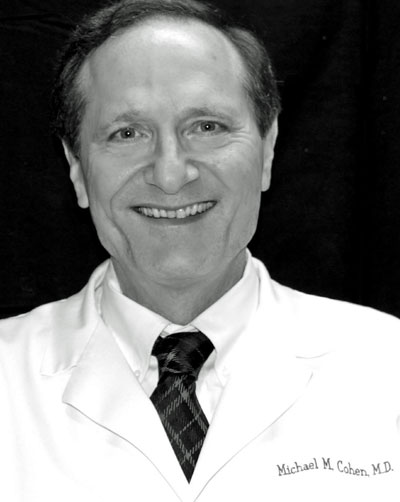- Home
- Sailing Authors & Their Writings
- Dr Michael Cohen
- Sailors Guts
Sailors Guts
by Michael Martin Cohen M.D.
Sailing nutrition has a long and complicated nautical history. As documented in the text ('Healthy Boating and Sailing') the history of scurvy at sea, especially during The Age of Sail is both instructive and sad because of missed opportunities.1
As early as 1593, Sir Richard Hawkins recommended the following treatment for scurvy:
“That which I have seen most fruitful for this sicknesse is sower [sour] oranges and lemmons.”
Only seven years later Captain James Lancaster unintentionally performed a controlled study of lemon juice as a preventative for scurvy. However, another 150 years would pass until Scottish naval surgeon James Lind 'proved' in 1747 the curative power of citrus fruits. It still took another half century until the Admiralty prescribed lemon juice for all sailors.2
Then came the experience of Captain James Cook. Although he used orange and lemon juice to treat cases of scurvy, he relied primarily on fresh fruit and vegetables whenever it was available on stopovers. When he left England for the South Pacific in 1768 the log of provisions also indicates that there was 7,860 pounds of sauerkraut.3
Despite his years-long voyage he did not lose a single man to scurvy – a fact of which he was extremely proud.
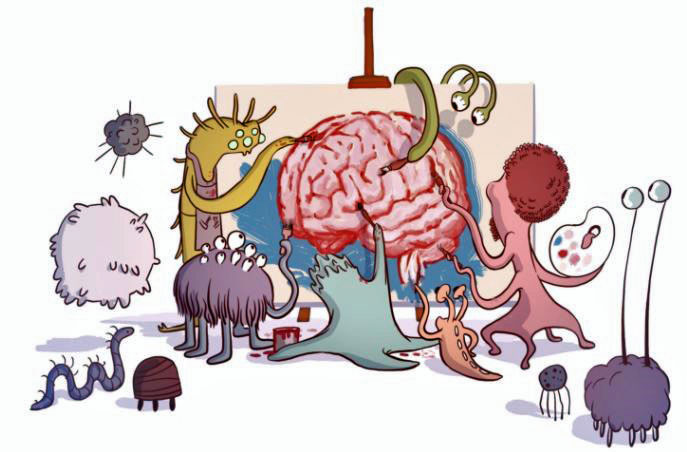 Figure 1: The unique characters of the Microbiome working over the sailor’s brain
Figure 1: The unique characters of the Microbiome working over the sailor’s brainBut not only did his sailors avoid scurvy, he lost only one man to a health-related issue (possibly tuberculosis). The reason his men remained so healthy was undoubtedly due in part to the fresh food provisions. They were fed good nutritious food as often as possible. In addition to fresh fruit and veggies there was that sauerkraut.4
Sauerkraut is an excellent probiotic. The importance of what you eat will become clear as we take a deep dive into the microbiome. Let’s just say that there was more truth in the aphorism 'You Are What You Eat' than your mother ever knew. For the boating and sailing community there is at least one of three reasons to pay attention:
Understanding the essentials of your microbiome is important for your health and performance as well as your sleep and exercise – and it turns out they are all connected.
There are some terms that first need to be defined:
- Microbiota refers to the microorganisms found in and on essentially all plants and animals. Our Microbiota includes mainly bacteria, but also archaea, fungi, and viruses and others. We are not alone.
- Microbiome refers to the microorganisms and their genes whereas the microbiota only refers to the microbes themselves.
Our understanding of the microbiome is less than 20 years old and followed the intense interest in and the complete sequencing of the human genome – the Human Genome Project.
We have about 20,000 genes give or take. It turns out that if you do a gene sequence on all the genes in our microbiome there may be as many as 200,000-2,000,000 genes! That is, there are more active genes in you – that are not you – than there are genes that you received from your mother and father! And most of them are in the 'gut.'
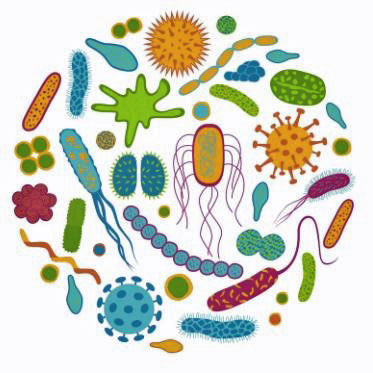
That’s bad enough, but wait, if we turn to the microbiota and look at the microorganism cells – it turns out that the number of bacteria [not counting viruses, stray fungi, etc.] outnumber our own cells by a ratio of 1.3:1. That’s humbling.5
We are interested in the 'gut' microbiome since that affects humans the most – both on the water and on dry land. But for completeness it is important to realize that there are millions and billions of microbes in the mouth, nose and lungs, skin, vagina, and breastmilk.
However, the most important species for both health and disease are located in the GI tract – our gut. And the health and diversity of our microbiome has a direct effect on our mental and physical health and on our ability to function and compete on the water.
Curled up inside us, our intestines have a surface area of around 32m2, or 344ft2. That is, the intestines of an average adult occupy the same surface area as a small studio apartment in New York City. But instead of housing stressed-out Manhattanites, a human’s gut hosts trillions of microbes.
Our intestinal walls absorb and interact with all the molecules we ingest, but so do these microscopic chemists that live inside us. They take the nutrients in and then pump out a raft of new chemicals.
What do they look like (since they are 'us' we probably should know). Below (Figure 2) is a photomicrograph (colorized) of one of these good bacteria: Lactobacillus.
For those of you who are too squeamish, just look away. For the rest of you, no, you are not that attractive inside. If you don’t believe me, check with your gastroenterologist.
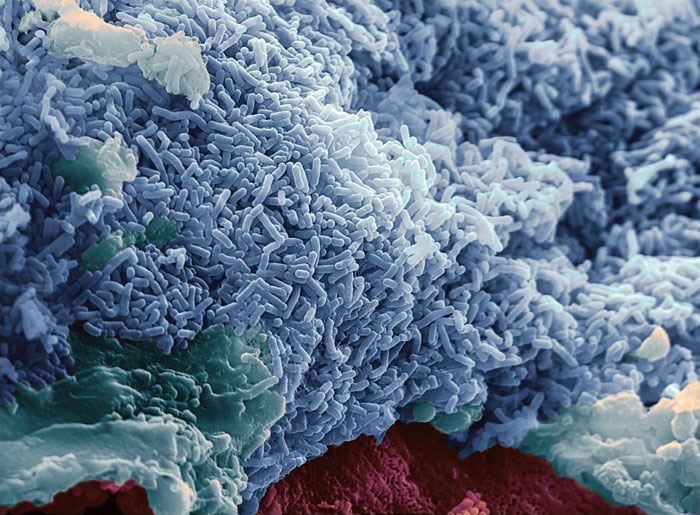 Figure 2: Lactobacillus reuteri, colorized and attached to the gut (purple)
Figure 2: Lactobacillus reuteri, colorized and attached to the gut (purple)
Microbiome as Food Processor
Every time that we eat or drink something, it goes into the gastrointestinal tract, where digestion of food takes place – enzymes and acids convert food into small fragments that can be absorbed by the gut. Gastrointestinal cells produce these enzymes and acids. Together with gastrointestinal cells, gut bacteria in the microbiome (Figure 2) help the body with food digestion and also help to produce some of these nutrients, including vitamins.6
Bacteria also have the capacity to convert fiber into energy for the human body. In fact, by breaking down fiber [that humans can’t directly digest] gut bacteria produce around 10% of the energy that the body uses.
“What food does your microbiome prefer?”
“Mediterranean.”
“Why?”
“Why do you like French cuisine?”
To answer the question of 'why' Mediterranean and to keep your microbiome happy keep reading:
Eat a diverse diet rich in whole foods.
Eat lots of vegetables, legumes, beans, and fruit. Some high fiber foods include:
Eat fermented food such as:
- Yogurt, kimchi, sauerkraut, kefir, kombucha, tempeh
Don’t use too many artificial sweeteners.
Reduce consumption of red meat.
Time out for two more definitions
- Prebiotic – these are plant fibers found in many of the fruits and vegetables that we have been talking about. These fibers and also resistant starches aren’t digestible by humans but become food for the bacteria.
- Probiotics – these are different in that they contain live organisms, usually specific strains of bacteria that add to the population of healthy microbes in your gut. The most common food is yogurt but many fermented foods contain probiotics.
Beware, the term Probiotic is currently being overused in marketing – Caveat Emptor!
The Average Boater and Daysailor
The dietary intake is not much of a problem for the average boater since they can purchase fresh food whenever they like. A diet along the lines of a Mediterranean program with or without the optional glass of wine is probably optimal. See the text (“Healthy Boater and Sailor”) for a discussion of the most nutritional food programs. As far as we’re concerned, the key slogans to remember are 'Make mine a Plant Based Diet', 'Fruits and Vegetables – eating the rainbow', and 'Fiber Forever'.
The Cruising Sailor
It is a problem for long distance cruising sailors, spending weeks and months at sea. If they are fortunate enough to be on a vessel with a large-capacity cold storage, then it is not a problem. Otherwise, they will have to make do. In that case, adding a multivitamin is probably a good idea and buying fresh food whenever available.
What about probiotics? There will undoubtedly be a place for probiotics in the future. And it will probably be personalized. Currently it is a bit early although definitely discuss this with your Primary Care Physician or Gastroenterologist.
In 2021 the number of commercial probiotics available for purchase is staggering. A quick review on Amazon reveals that there is incredible variability in the composition of the products. Some use primarily one species or a few different strains, while other manufacturers have a potpourri of different 'ingredients'. Do any of them really help?
At this point in 2021 there is little to no evidence. But, if you are a long-distance cruising sailor, it might make sense to try out some probiotics well before you leave to make sure they agree with you. Perhaps one with multiple common strains but check with your physician.
What does the future hold in store? You can already have your microbiome analyzed by a variety of for-profit labs. Should you? Probably not yet, but in a few years, it may become as common and as easy as 23andMe or Ancestry.
“Hey, Brad, how’s your Lacto doing?”
Time will tell, but right now it is mainly for research. Figure 3 represents how this might work (the illustration is for treating 3 different diseases, but the concept would be the same for treating real 'deficiencies'. Your microbiome would be analyzed, and you would be 'treated' with the appropriate prebiotic (nutrition) and probiotic.7 (Figure 3)
There has been at least one formal study addressing sailors involved in long sea voyages. It is entitled 'Probiotics maintain the intestinal microbiome homeostasis of the sailors during a long sea voyage'. It was a longitudinal placebo controlled (not double blind!) study of 82 sailors. The study looks impressive with sophisticated microbiome analysis.
However, since one of the lactobacillus strains was developed by the lead author (Lactobacillus casei Zhang) and the company which did the study sells the probiotic product, I remain skeptical.
A Swedish company has developed a lozenge which contains Lactobacillus reuteri Prodentis to improve the mouth microbiome.
Does it help? It appeared to. But, beware, this space is going to be marketed to the nth degree and is bound to attract snake oil salesmen. I would note that if you look through the probiotic offerings on Amazon you will even discover a multitude of probiotics not only for humans but also for dogs! And cats!
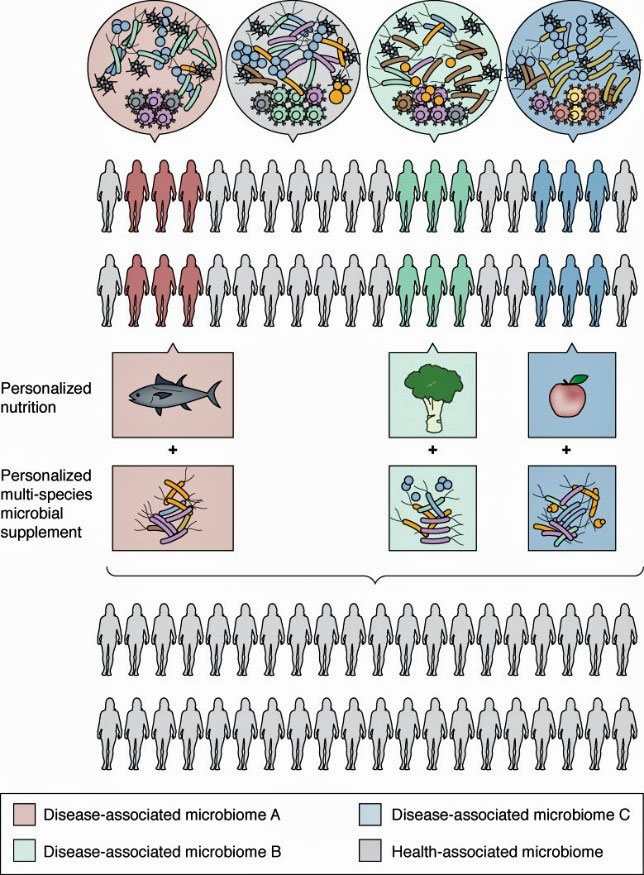 Figure 3: Personized medicine of the future. The future long-distance cruising sailor will have their microbiome analyzed and be given a personalized diet and personalized probiotics. [Possibly right after we have self-driving cars.]
Figure 3: Personized medicine of the future. The future long-distance cruising sailor will have their microbiome analyzed and be given a personalized diet and personalized probiotics. [Possibly right after we have self-driving cars.]
The Racing Sailor
Although racing sailors can theoretically eat a nutritious diet, their coaches and trainers may still be so 'twentieth century' in their understanding of nutrition and the sailing athlete. A typical example of nutritional recommendations for sailors is this website from Sports Dieticians of Australia www.sportsdietitians.com.au/factsheets/food-for-your-sport/sailing/ which comes with a very helpful pdf download 'Food for Your Sport – Sailing'.
However, there is no discussion of the importance of the microbiome. I am not faulting them as this author’s chapter on nutrition (Chapter 9 'Healthy Boating and Sailing') is also bereft of this topic. This article will hopefully fill that void. It is a new field, and it is developing before our eyes.
A comprehensive review from the University of Louisville and its Sports Nutrition Department documents the shortcomings. Entitled 'Does the Intestinal Microbiome Impact Athletic Performance?' It turns out that there have been very few studies applying microbiome research with known characteristics of performance especially in elite athletes. However, it may not be quiet for long if as the authors state, 'Prioritizing the health of the gut microbiome could be a new frontier for a competitive edge [author underline] in athletics. [On the other hand] It is clear that dietary choices, self-medication, and the use of supplements may exert a deleterious effect on the microbiome.'
One example of the fact that we are still early, is the experience of Oracle Team USA ahead of the 2017 defense of the America’s Cup. Team Oracle partnered with “Ixcela: The Internal Fitness Company” to analyze and provide a 'personalized program, which includes dietary consultation and proprietary supplements specifically targeted at improving gut microbiome health.' Team Oracle lost the 35th America’s Cup to Emirates Team New Zealand by a score of 7 to 1!
Despite the importance of the microbiome to both overall health AND performance, traditional approaches to the diet of athletes will probably change slowly.
When to Eat?
We have discussed nutrition and exercise but so far have neglected sleep. If you recall from the previous blog article entitled 'Time on the Water,' each of our organs has its own clock and keeps its own time – usually kept in sync by the master clock in the brain (hypothalamus). You can think of the microbiome as an organ as well and it also has its own timekeeping cells. [In fact, as difficult as it is to believe, each cell in your body has a genetic time-keeping system.]
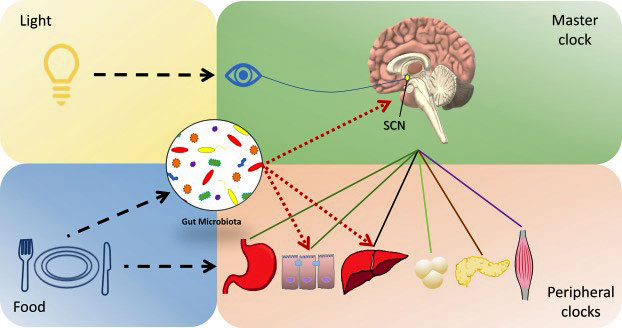 Figure 4: Gut Microbiota has its own clock that interacts with our hypothalamus master clock
Figure 4: Gut Microbiota has its own clock that interacts with our hypothalamus master clockWhat this figure doesn’t show is the reciprocal relationship between the gut and brain: the so-called Microbiome-Gut-Brain Axis (MGB) Axis.
Microbiome-Gut-Brain Axis (MGB) Axis
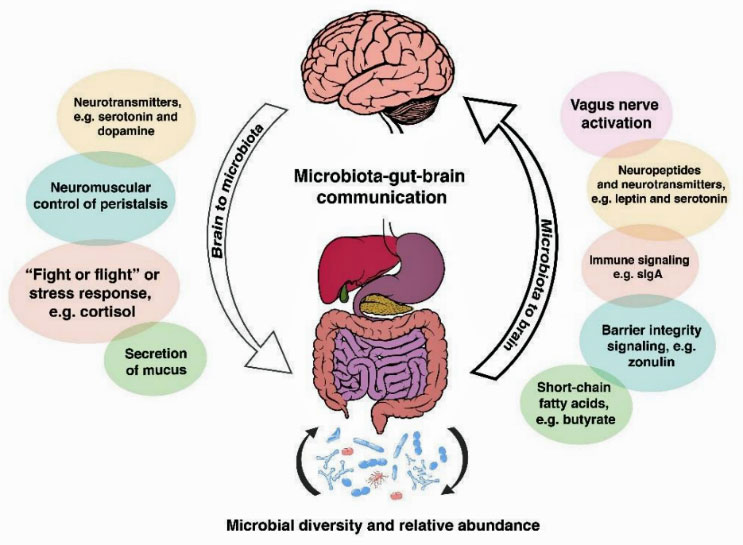 Figure 5: Microbiota-Gut-Brain Axis
Figure 5: Microbiota-Gut-Brain AxisThere is a dynamic relationship between the brain and the gut (Figure 5) and in fact the gut has its own nervous system – the enteric nervous system. It functions as a gut-brain and is in 2-way communication with the big brain, day and night. And just like the big brain it doesn’t do well when its clock rhythm is thrown off.
Figure 6 demonstrates how different microbes fluctuate normally during the day and night cycle (see the black and white bars) in “A”; but are asynchronous (flat line) in the face of jet lag, shift work, or in our case when meals are taken irregularly as often happens when cruising shorthanded (“B”).
The most trying situation almost certainly occurs in long-distance single-handed sailing (e.g., across the ocean or around the world). In this situation all of the clocks are out of sync. Your brain is getting brief snippets of sleep throughout the day and meals are haphazard.
In the short term, it probably won’t produce any damage but as has been well documented in long term shift workers, you can expect all kinds of GI and brain problems. And immunologic.
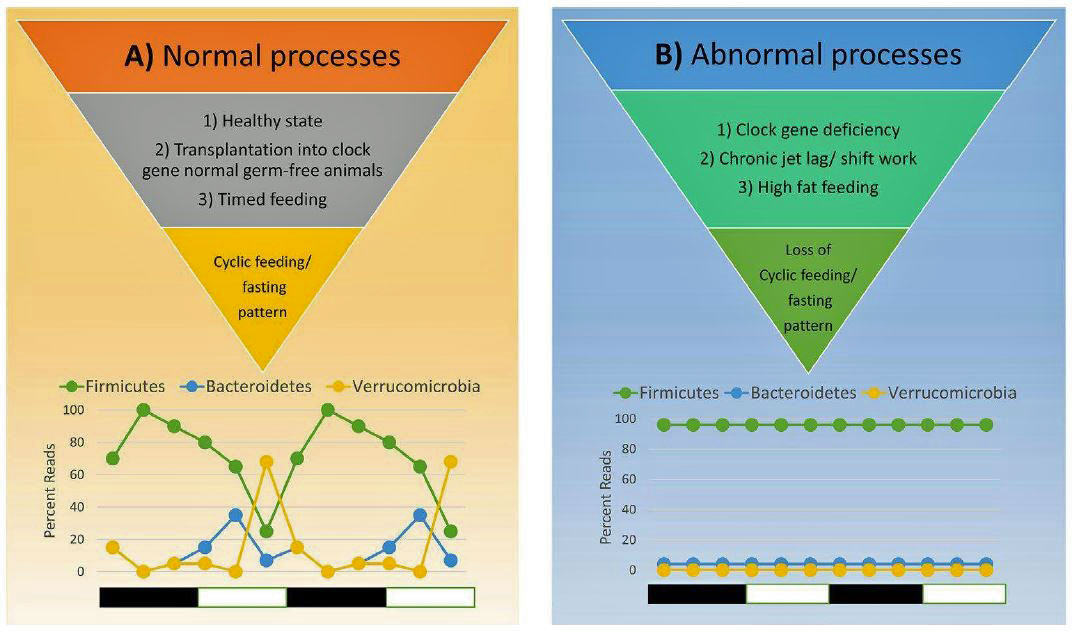 Figure 6: Daily fluctuations in the microbiome
Figure 6: Daily fluctuations in the microbiome
Only intrepid sailors should proceed beyond this point........
Let’s look just a little more deeply at the Microbiome-Gut-Brain (MGB) Axis. It is a complex and sophisticated system. Figure 7 demonstrates some of the complexity.
On the illustration in Figure 7, #1 demonstrates the immune cells. Fun fact – the gut contains 70% of all the immune cells in the body, dwarfing the number in the blood, lymph nodes, spleen, and thymus. Current research is just beginning to explain the relationship between the MGB Axis and a number of autoimmune diseases like lupus, rheumatoid arthritis, and even multiple sclerosis. Microbes also interact with immune cells in the gut, prompting the cells to make cytokines that circulate in the blood. [Yes, the same kind of cytokines that played a role in severe cases of Covid-19.]
There are also endocrine cells (#2) called enteroendocrine cells that produce neuroactive molecules (hormones) that influence the rate of food absorption, insulin secretion and intestinal function. These molecules interact with the vagus nerve, which sends signals to the brain. The vagus nerve is a 2-way street and communicates – sends signals back – to the gut.
Microbes in the gut produce neurotransmitters like serotonin and other metabolites (#3) including small chain fatty acids (SMFAs) like butyrate. These SMFAs circulate to the brain, where some of them are small enough to cross the blood-brain barrier. Much of the brain’s serotonin appears to come from or be associated with the gut.
It is clear that an abnormal distribution of microbes (especially bacteria) – too many 'bad' species –is associated with GI diseases such as Irritable Bowel Syndrome (IBS) and Inflammatory Bowel Disease (IBD). But there is increasing data suggesting an association with a number of neurologic diseases in addition to multiple sclerosis, such as Alzheimer’s disease and even possibly some cases of autism. Additionally, stress has a profound effect on the microbiome and likewise abnormalities in the microbiome can produce abnormal states such as severe depression. We are just learning about this relationship (#4).
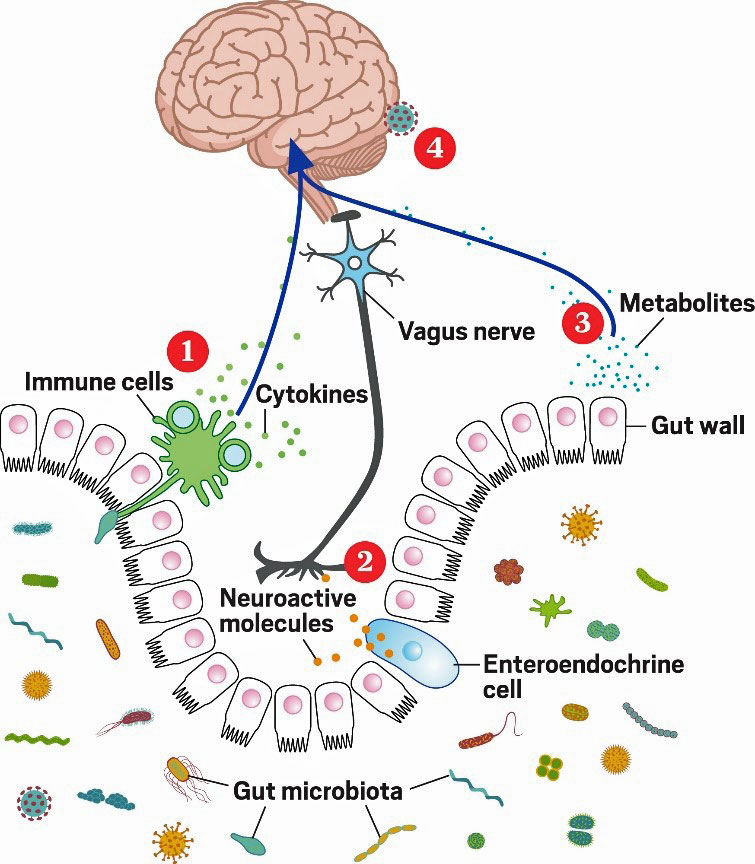 Figure 7: MGB Axis
Figure 7: MGB Axis
Final thoughts...
Cultivate your gut bugs. Love them, feed them, care for them and respect them for all the hard work they are doing on your behalf. Exercise to keep them healthy and please let them rest at night.
And when you flush some of them down the toilet, don’t do it with disrespect. Rather, appreciate them for a job well done.
Michael Martin Cohen M.D.
1 The fault is not that they didn’t understand Vitamin C – that wouldn’t occur till the 20th century – rather, for centuries the prevention and treatment had been established – and then simply ignored or forgotten
2 Because limes were easier to procure, the Admiralty favored limes, hence the term “limeys.” Unfortunately (you can see why this story is so sad) processed lime juice loses much of its vitamin C unlike lemon juice which retains much of its nutritional value.
3 Made by fermenting thinly sliced cabbage in its own natural juices, sauerkraut is rich in vitamin C, which — although unknown at the time — is the key to preventing and curing scurvy. While raw cabbage contains moderate levels of the vitamin, the process of fermentation causes these levels to rise considerably.
4 Three years after leaving England with his store of Sour Kroutt (as it was spelled then) and with not a single death attributed to scurvy, Cook returned home to report his findings. Although sour cabbage alone did not rid the seas of the disease — Cook’s crew also dined on such delicacies as spruce beer, malt, and portable soup — it certainly played a major part. While captains were sure to stock kraut on future voyages because of its nutritious qualities, Cook was far from the first to find out the curative powers of the dish: Asian cultures have relied on fermented cabbage to survive long winters between fruit seasons for thousands of years. Kimchi, sauerkraut’s Korean cousin, was historically used during winter to stave off vitamin deficiencies, while early records show workers building the Great Wall of China ate fermented cabbage regularly when fruit was not available. The earliest sauerkraut recipes found in Eastern Europe are thought to have come by way of the hordes of Genghis Khan. Sauerkraut has also been used in Germany for medicinal purposes; traditionally in many parts of southern Germany, some families would feed their children raw sauerkraut two times every week – this was believed to support and strengthen the intestines of the sick children. Sauerkraut is also traditionally produced in the Balkans using whole heads of cabbage instead of shredded cabbage. It is usually produced by spontaneous fermentation.
5 I suppose we should entirely give up the “I” pronoun and refer to ourselves as “We.”
6 Most of the B vitamins (including B12) and vitamin K are dependent on the microbiome
7 Preferably, the company which does the analysis is separate from the company trying to sell you their product.
Recent Articles
-
Modern Boat Electronics and the Latest Marine Instruments
Dec 20, 25 05:27 PM
Should sailboat instruments be linked to the latest boat electronics as a fully integrated system, or is it best to leave them as independent units? -
Hans Christian 43: Classic Bluewater Cruiser & Liveaboard Sailboat
Dec 10, 25 04:37 AM
Explore the Hans Christian 43: a legendary heavy-displacement, long-keel sailboat. Read our in-depth review of its specs, design ratios, and suitability for offshore cruising and living aboard. -
Planning Your Sailboat Liveaboard Lifestyle: An Ocean Sailor's Guide
Dec 06, 25 05:18 AM
Seasoned sailors share their methodical risk analysis for planning a secure Sailboat Liveaboard Lifestyle, covering financial, property, and relationship risks.
